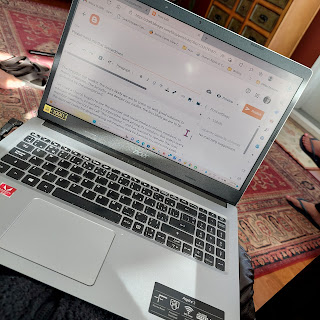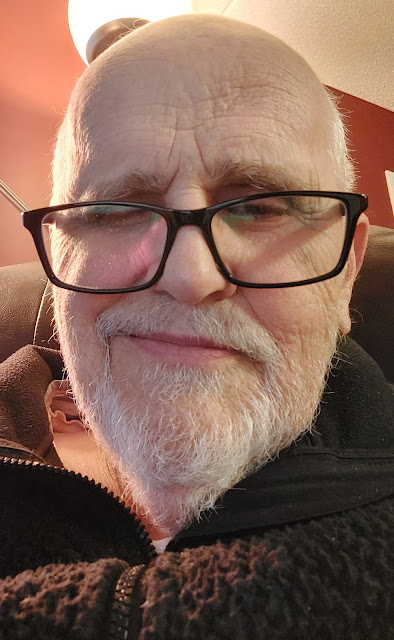How Do I Think I Think?
Practical Reconciliation, Part 4
To review: Binary thinking is 2-positions thinking: “It’s either this or that.” You’re either born again or you’re not born again, in America you’re white or not-white, “you’re either for me or against me.” I’m basing spectrum thinking on the notion that there’s generally vast territory between the poles of a binary view. In other words, one can be on the way toward or away from what Jesus meant by rebirth, people can have a mixed heritage that can’t be described by any of white, black, or coloured, and it’s possible to partially favour a leader on some issues and not on others, so that “for or against” becomes binary nonsense.
The question of bias is well demonstrated by, for instance, statistics about the preponderance of police stops of black drivers over white drivers in the USA and Canada. Bias is a leaning toward or away from and it needn’t be deliberate; bias can motivate actions out of our unconscious, cause us to make choices that are not consciously, deliberately made. A recent experiment showed photos of an equal number of African-American doctors and Caucasian doctors to an equal number of African-American and and Caucasian subjects who were asked to pick from the array of faces a few they might consider choosing to be their family doctor. Both African-American and Caucasian subjects picked more Caucasian doctors than African-American doctors, indicating that a bias exists toward competence in medicine as a Caucasian attribute . . . in both African-American and Caucasian-Americans.
Most biases are harmless, some amusing, many hard to explain because they often have no reasonable or supportable foundation. So if Joe is so biased toward Ford vehicles and against GM vehicles that he won’t even consider a Silverado pickup, well, who cares? The number of neighbours biased in opposite directions will mean—probably—that even the dealerships couldn’t care less about Joe’s bias.
Joe’s bias could, however, become dangerous if it morphs into something real in his mind, that is to say, if he becomes convinced that GM vehicle makers and owners are bad, possibly evil, or if Ford pickups appear gradually to become a minority choice, Joe may come to think that GM people have conspired to sink the kingdom of Ford . . . the world in which he lives.
Biases can morph into hardened prejudice, discrimination, racism. The silly example of Joe’s F-150-world probably doesn’t do the phenomenon justice, but it’s not far off from the morphing of bias away from Aboriginal people, immigrants, and people of colour into something hardened and destructive, as if Joe would go around at night setting fire to all the Silverados he could find. Echoes of the Ku Klux Klan? Echoes of the cultural genocide that was the purpose behind residential schools? Echoes of violent segregation?
Bias and prejudice are supported by binary thinking. Between African-Americans, African-Canadians and descendants of colonialists and slave owners, there is too little, if any, space for exceptions; just a thick, dark line. Two camps. The harmfulness in this thinking persisting in the church drove the Apostle Paul to distraction; there was just too much of “you’re either a Jew or a Gentile, you’re circumcised or your not, you follow Paul or you follow Apollo.” And Paul’s rebuttal: “For all of you who were baptized into Christ have clothed yourselves with Christ. There is neither Jew nor Gentile, neither slave nor free, nor is there male and female, for you are all one in Christ Jesus.” (Galatians 3: 27 & 28, NIV)
Prejudices rest on false consciousness, by and large, based often on examples plucked out from experience. Aboriginals are characterized as shiftless, dishonest, ignorant, drunk-as-often-as-not, etc. There are places on the human spectrum where shiftlessness, dishonesty, ignorance, drunkenness can be found, but these places are movable and are not exclusive to race or ethnicity. The fact that whole populations are painted with the same brush based on incidental observations and the loud opinions of the terminally prejudiced is a tragedy that dooms entire ethnicities to second class status, or worse.
We are all biased, we are all prejudiced, we are all racist, even if we’re being careful not to behave in biased, prejudiced or racist ways and if we insist that we’re not. Research has shown that bias can live in the unconscious mind, established there by the experiences of childhood and growing up and including, of course, parents’ biases absorbed as if by osmosis. For those of you who prefer science as the go-to authority on such matters, I highly recommend an article on unconscious bias in Psychology Today; access it by consulting the May 1998 issue of Psychology Today, “Where Bias Begins: The Truth about Stereotypes.” (or, https://www.psychologytoday.com/us/articles/199805/where-bias-begins-the-truth-about-stereotypes )
But as agents of reconciliation, we individually and as a church community are called to help bridge the dividing rivers that prejudice and racism create. Firstly, we need to confess the weaknesses that bias has embedded in us. Second, we need to actively undermine our own biases by doing the opposite to the knee-jerk responses that those biases dictate: sit next to the Aboriginal man on the bus, perhaps, rather than the guy who looks familiarly Mennonite. Skip church at home and worship with the Catholics, or the Pentecostals occasionally. Go to a Pow-Wow and join in a circle dance. Since stereotypes are often based on assumptions supported by very little experience, let’s pile on the experiences that will broaden our outlooks, in other words. Getting to know people who appear different, who belong to an identifiable minority can do wonders toward erasing stereotypes, prejudice, unconscious or conscious bias.
One of the great injustices bias and its children—racism and discrimination—can be blamed for with certainty is that bias against a group generally shows up as discrimination against individuals in the group. And so, persons of merit may be judged not on their talents and abilities, but on a bias against their ethnicity. My good friend is a teacher and is Aboriginal. He was advised to apply for a job in Northern as opposed to Southern Saskatchewan where, he was told, he’d have zero chance of being hired.
This was in 1963; I hope such a judgment would no longer be made.




Comments
Post a Comment